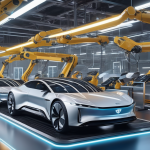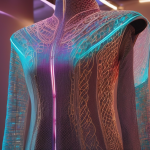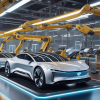Is AI a Threat to Human Jobs?
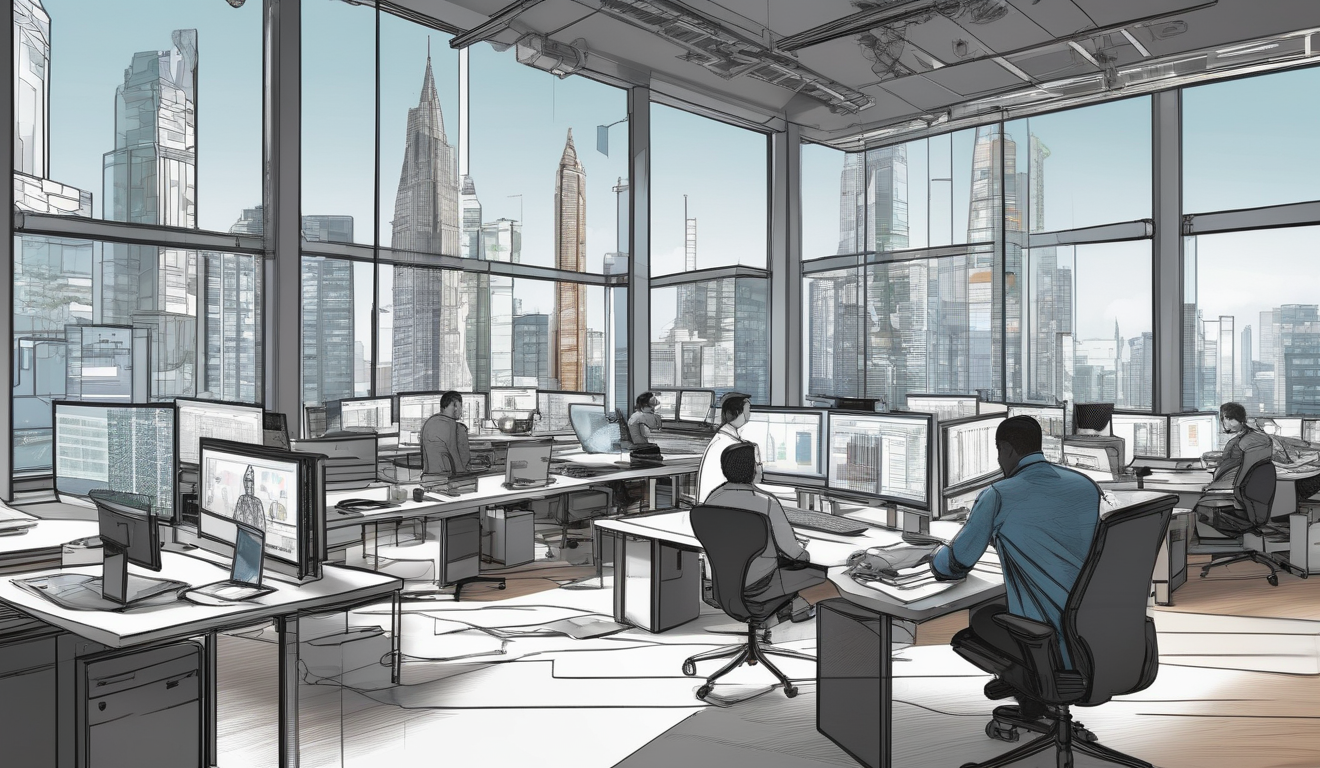
The emergence of artificial intelligence (AI) has sparked a heated debate: is it a friend or foe to human employment? As we stand at the crossroads of technological advancement, it’s essential to explore the implications of AI on the job market. While some view AI as a looming threat, others see it as an opportunity for growth and innovation. But what does the reality look like?
AI is rapidly integrating into various sectors, reshaping the way we work. From automated customer service chatbots to sophisticated data analysis tools, the presence of AI is undeniable. It’s like having a supercharged assistant that never sleeps! However, this integration raises questions about job security. Will machines take over our roles, or will they simply enhance our capabilities?
On one hand, it’s true that AI can lead to job displacement. Roles that involve repetitive tasks are particularly vulnerable. For instance, consider the manufacturing sector. Machines can perform assembly line jobs with precision and speed that far surpass human abilities. But before we hit the panic button, it’s crucial to recognize that AI also creates new job opportunities. Think about it: as AI technologies evolve, so do the skills required to operate and maintain them. New roles in AI management, data analysis, and technology development are emerging faster than you can say “machine learning.”
So, which industries are feeling the heat from AI? The manufacturing sector is experiencing a significant shift towards automation, leading to substantial changes in factory jobs. In healthcare, AI is revolutionizing diagnostics and patient care, but this innovation also brings a potential shift in job roles. As machines take on certain tasks, healthcare professionals may find themselves focusing on more complex and human-centric aspects of care.
As we navigate this AI-driven landscape, the importance of reskilling and upskilling cannot be overstated. Workers must adapt to new technologies and embrace lifelong learning to remain relevant. Educational institutions are stepping up, integrating AI into their curricula to prepare students for the future. The goal? To ensure that the workforce is equipped with the skills necessary to thrive in an AI-enhanced world.
In conclusion, the impact of AI on human jobs is a double-edged sword. While there are undeniable risks, there are also exciting opportunities for growth and innovation. The key lies in our ability to adapt, learn, and embrace the changes that come with this technological revolution.

The Rise of AI in the Workplace
As we dive into the 21st century, the integration of artificial intelligence (AI) into the workplace is not just a trend; it’s a revolution. AI technologies are becoming increasingly sophisticated, enabling machines to perform tasks that once required human intelligence. From chatbots handling customer service inquiries to advanced algorithms optimizing supply chains, AI is reshaping how we work. But what does this mean for the average employee? Are we looking at a future where machines take over, or is there a silver lining?
Understanding the current landscape of AI is crucial. It’s not just about robots on the factory floor; AI is infiltrating various sectors, including:
- Finance: Algorithms analyze market trends faster than any human could.
- Retail: AI-driven tools personalize shopping experiences for consumers.
- Transportation: Self-driving vehicles promise to change logistics and delivery services.
These technologies are being integrated into everyday operations, enhancing efficiency and productivity. For instance, in the finance sector, AI can process vast amounts of data to predict stock market movements, allowing companies to make informed decisions at lightning speed. Meanwhile, in retail, AI analyzes customer behavior to tailor marketing strategies, ensuring that businesses can meet consumer needs more effectively than ever before.
However, with great power comes great responsibility. The rise of AI raises questions about job security and the future of work. Employees may feel like they are in a race against time, trying to keep up with the rapid advancements in technology. But rather than viewing AI as a foe, it’s important to recognize the potential for collaboration between humans and machines. The key lies in understanding that while AI can automate repetitive tasks, it can also augment human capabilities, allowing workers to focus on more complex and creative aspects of their jobs.
In conclusion, the rise of AI in the workplace presents both challenges and opportunities. As we navigate this new landscape, it’s crucial to stay informed and adapt to the changes. Embracing AI could lead to a more efficient, innovative, and ultimately more fulfilling work environment for everyone involved.
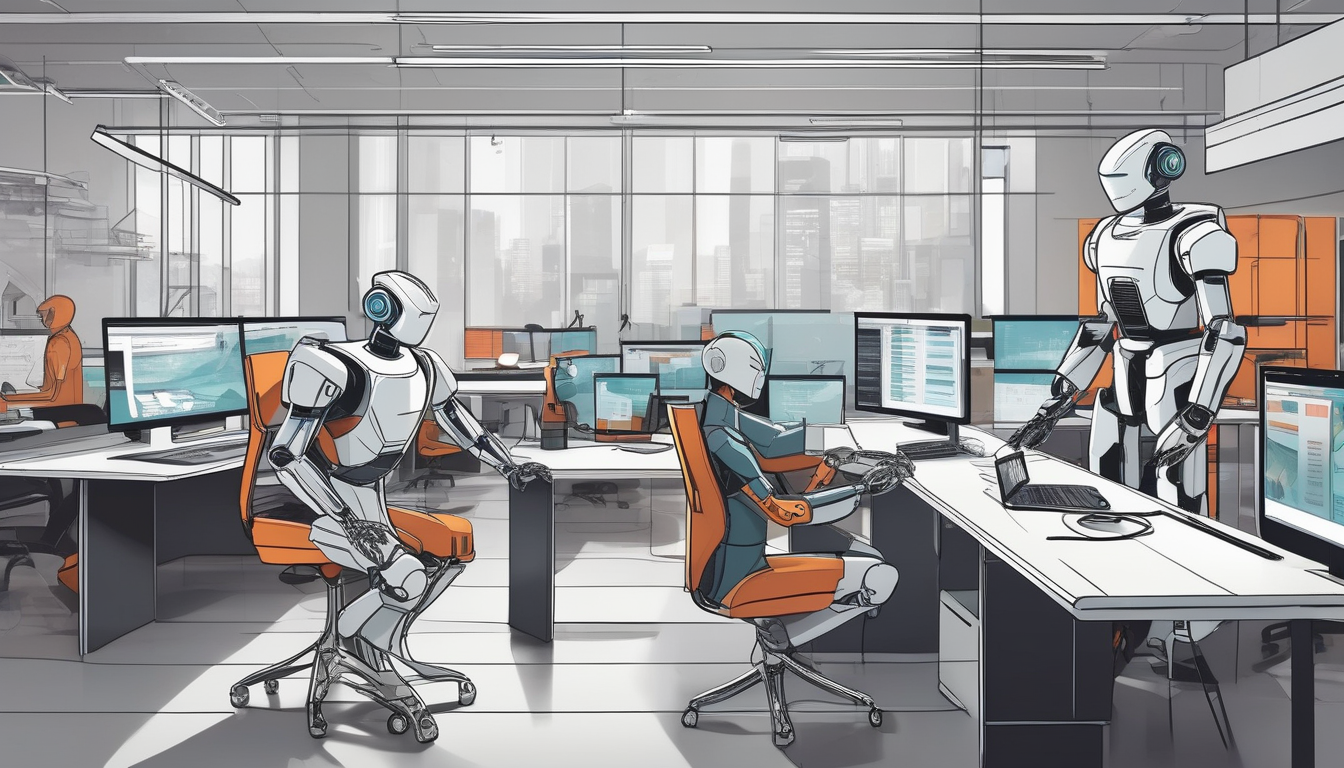
Job Displacement vs. Job Creation
As we step into the future, the conversation around artificial intelligence (AI) and its impact on jobs becomes increasingly important. Yes, AI has the potential to displace jobs, but let’s not forget that it also opens the door to a plethora of new opportunities. Imagine a world where machines handle mundane tasks, allowing humans to focus on more creative and fulfilling work. Sounds like a dream, right? But how do we navigate this complex landscape?
First, it’s essential to recognize that job displacement is not a new phenomenon. Throughout history, technological advancements have led to the evolution of the workforce. For instance, the industrial revolution saw many manual jobs replaced by machinery. What we are witnessing now is a similar shift, but on a much grander scale. The key question is: how can we balance the scales between lost jobs and emerging roles?
To illustrate this balance, consider the following table that highlights the potential impact of AI on various job sectors:
| Job Sector | Potential Displacement | Emerging Opportunities |
|---|---|---|
| Manufacturing | High | Automation specialists, AI maintenance |
| Healthcare | Medium | Data analysts, AI trainers |
| Customer Service | High | AI developers, user experience designers |
As we can see, while some sectors may face significant job losses, they are also paving the way for new roles that require a different skill set. The challenge lies in ensuring that the workforce is prepared to transition into these new opportunities. This is where reskilling and upskilling come into play.
In the end, the relationship between job displacement and job creation is not a zero-sum game. It’s about adaptation and innovation. As AI continues to evolve, so must we. Are we ready to embrace the change and seize the opportunities that lie ahead? The future of work may look different, but it can also be brighter if we choose to evolve with it.
Industries Most Affected by AI
The advent of artificial intelligence (AI) is reshaping various sectors, and some industries are feeling the impact more than others. It’s like watching a tidal wave approach the shore; you can see where the water is rising and which areas are likely to be submerged. So, which industries are most susceptible to this transformation? Let’s dive in!
First off, the manufacturing sector has been one of the front-runners in adopting AI technologies. Automation has taken center stage in factories, where robots now handle tasks that were once performed by human hands. This shift not only enhances efficiency but also raises questions about job security for factory workers. As machines take over repetitive tasks, the need for manual labor decreases, leading to significant job displacement.
Next up is the transportation industry. With the rise of self-driving technology, traditional roles such as truck drivers and taxi operators face an uncertain future. Imagine a world where you hop into a car that drives itself—sounds futuristic, right? Yet, this innovation could potentially eliminate millions of driving jobs, forcing workers to seek new opportunities in an evolving landscape.
Another sector undergoing a seismic shift is healthcare. AI is revolutionizing diagnostics and treatment plans, making processes faster and more accurate. For instance, AI algorithms can analyze medical images and detect anomalies with remarkable precision. However, this also means that some roles traditionally filled by radiologists and other medical professionals may be at risk. The balance here lies in how these technologies can complement human expertise rather than replace it.
Lastly, the retail sector is not immune to AI’s influence. From chatbots assisting customers to automated checkout systems, the shopping experience is changing rapidly. While these advancements can enhance customer satisfaction, they also put frontline jobs at risk. Workers in cashiers and customer service roles may find themselves needing to adapt to new technologies or face job loss.
In summary, while AI presents incredible opportunities for efficiency and innovation, it also poses significant challenges for various industries. Understanding these shifts is crucial for both workers and employers as we navigate this new terrain together.
Manufacturing and Automation
In the world of manufacturing, the integration of automation and artificial intelligence (AI) is nothing short of a revolution. Imagine a factory floor where robots and AI systems work alongside human employees, each playing a crucial role in the production process. This synergy not only enhances efficiency but also transforms the very nature of manufacturing jobs. While some may fear that machines will take over, the reality is more nuanced. It’s about collaboration rather than competition.
As we delve deeper into the impact of AI on manufacturing, it’s essential to recognize the benefits it brings. For instance, AI can analyze vast amounts of data in real-time, identifying inefficiencies that a human might overlook. This capability allows manufacturers to optimize their operations, reduce waste, and ultimately, increase profitability. However, this shift also raises questions: What happens to the workers whose jobs are made redundant by these technologies? Will they be left behind in this new era?
While AI may displace certain roles, it also paves the way for new opportunities. Workers will need to adapt to a changing landscape, where skills such as data analysis, robotics management, and programming become increasingly valuable. The key to navigating this transition lies in reskilling and upskilling the workforce. Companies that invest in training their employees will not only foster loyalty but also ensure they have a skilled workforce ready to tackle the challenges of an AI-driven environment.
To illustrate the impact of AI on job roles in manufacturing, consider the following table:
| Traditional Job Role | Emerging Role | Skills Required |
|---|---|---|
| Assembly Line Worker | Robotics Technician | Robotics programming, maintenance |
| Quality Control Inspector | Data Analyst | Data interpretation, statistical analysis |
| Machine Operator | AI Systems Manager | AI system management, troubleshooting |
In conclusion, while the rise of AI in manufacturing may seem daunting, it also opens up a world of potential. By embracing change and investing in education and training, workers can not only survive but thrive in this new landscape. After all, in the dance of progress, it’s not about who leads but how well we adapt to the rhythm of innovation.
Healthcare Innovations
Artificial Intelligence is not just a buzzword; it’s a game-changer in the healthcare sector. Imagine walking into a clinic where a machine can analyze your symptoms faster than a doctor can flip through a medical textbook. Sounds like science fiction? Well, it’s happening right now! AI technologies are revolutionizing diagnostics, treatment plans, and patient care, making healthcare more efficient and personalized than ever before.
One of the most exciting innovations is the use of AI in diagnostic imaging. Algorithms can now analyze X-rays, MRIs, and CT scans with remarkable accuracy. For instance, studies show that AI can detect diseases like cancer at earlier stages than traditional methods. This not only saves lives but also reduces the burden on healthcare professionals who often face overwhelming workloads.
Moreover, AI-powered chatbots are transforming patient interaction. These virtual assistants can provide instant responses to patient queries, schedule appointments, and even remind patients to take their medications. This not only enhances patient engagement but also frees up valuable time for healthcare providers to focus on complex cases. It’s like having a personal assistant who never sleeps!
However, with these advancements come questions about job displacement in the healthcare field. Will AI replace doctors and nurses? The answer is a resounding no. While AI can handle routine tasks, the human touch in patient care is irreplaceable. Healthcare professionals will still play a crucial role in interpreting AI-generated data and making critical decisions based on their expertise.
As we embrace these innovations, it’s essential to prepare the workforce for this shift. Reskilling and upskilling are vital. Educational institutions are already adapting their curricula to include AI training for future healthcare workers. They are focusing on integrating AI into healthcare education to ensure that new professionals are well-equipped to work alongside these technologies.
In conclusion, while AI is undoubtedly changing the landscape of healthcare, it also presents an opportunity for professionals to evolve. By embracing these innovations, the healthcare industry can improve outcomes and enhance patient care without sacrificing the invaluable human element. The future of healthcare is bright, and AI is here to illuminate the path forward!
Reskilling and Upskilling Workers
As we dive deeper into the age of artificial intelligence, one thing becomes clear: the workforce must adapt or risk being left behind. Reskilling and upskilling are not just buzzwords; they are essential strategies for workers to thrive in an AI-driven economy. Imagine trying to navigate a new city without a map—this is how many workers feel when faced with the rapid changes brought about by AI technologies. Without the right skills, they may find themselves lost in a job market that is evolving at breakneck speed.
So, what exactly do reskilling and upskilling mean? Reskilling involves teaching workers new skills to help them transition into different roles, while upskilling focuses on enhancing existing skills to keep pace with technological advancements. Both approaches are vital for ensuring that employees remain relevant and valuable in their fields. For instance, a factory worker might need to learn how to operate advanced robotics, while a marketing professional may need to master AI-driven analytics tools.
To effectively implement reskilling and upskilling programs, companies and educational institutions must collaborate. This partnership can lead to tailored training programs that address the specific needs of industries affected by AI. Here are a few key areas where training can make a significant impact:
- Technical Skills: Learning programming languages, data analysis, and AI fundamentals.
- Soft Skills: Enhancing communication, problem-solving, and adaptability skills to work alongside AI systems.
- Industry-Specific Skills: Training tailored to the unique demands of sectors like healthcare, finance, and manufacturing.
Moreover, companies can leverage online platforms and resources to facilitate continuous learning. By providing access to courses and training materials, organizations empower their workforce to take charge of their own development. This not only boosts employee morale but also fosters a culture of innovation and growth.
In conclusion, reskilling and upskilling are not merely options; they are necessities in today’s job market. As AI continues to reshape industries, the ability to adapt and learn will be the key to success. Workers who embrace these opportunities will not only secure their positions but also pave the way for exciting new career paths.
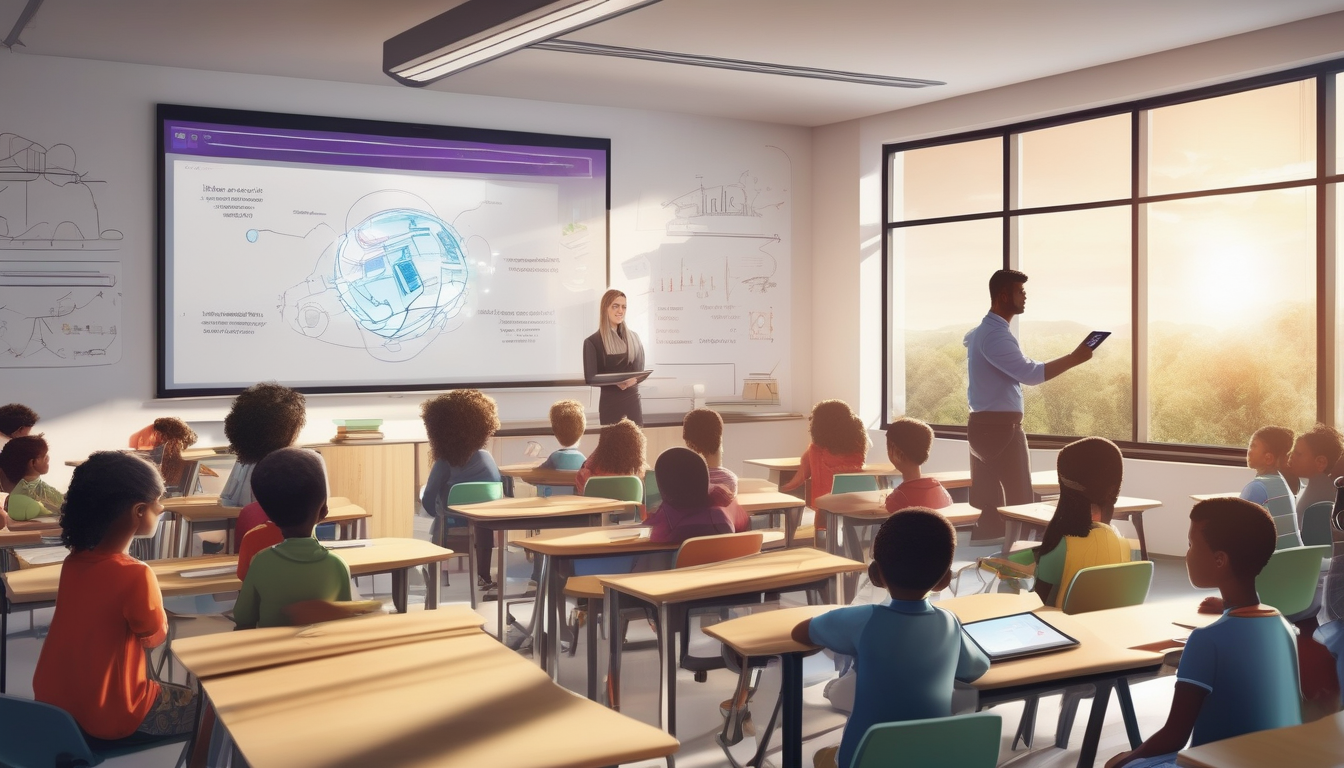
The Role of Education in the AI Era
In today’s fast-paced world, the impact of artificial intelligence on our daily lives is undeniable, and education is at the forefront of this transformation. As AI technologies continue to evolve, the need for a workforce that is not only familiar with these tools but also adept at using them is more critical than ever. Educational institutions are recognizing this shift and are adapting their curricula to prepare students for the challenges and opportunities that AI presents.
One of the key ways education is evolving is by integrating AI into various programs. This means that students are not just learning about traditional subjects; they are also gaining exposure to machine learning, data analysis, and AI ethics. By incorporating these topics into the curriculum, schools and universities are equipping students with the skills necessary to thrive in an AI-driven economy. For instance, a computer science program might now include courses on AI applications in healthcare or automated decision-making systems.
Moreover, the concept of lifelong learning is gaining traction as the job market becomes increasingly dynamic. Workers must now embrace continuous education to stay relevant. This can take many forms, such as online courses, workshops, or even self-study. The beauty of lifelong learning is that it offers flexibility, allowing individuals to learn at their own pace and on their own terms. With the rise of online platforms, anyone can access quality educational resources from the comfort of their home.
To illustrate the importance of education in the AI era, let’s consider the following table:
| Education Focus Area | Importance for AI Integration |
|---|---|
| Data Science | Essential for analyzing and interpreting data generated by AI systems. |
| Ethics in AI | Critical for understanding the moral implications of AI technologies. |
| Programming Skills | Fundamental for developing and maintaining AI applications. |
In conclusion, the role of education in the AI era cannot be understated. By embracing new technologies and fostering a culture of lifelong learning, we can ensure that the workforce is not only prepared for the changes brought about by AI but is also empowered to harness its potential. The future is bright for those who are willing to adapt and learn, and education will be the key to unlocking those opportunities.
Integrating AI into Curricula
As the world rapidly embraces artificial intelligence, educational institutions are stepping up to the plate, recognizing the need to prepare students for a future where AI is an integral part of various industries. It’s not just about teaching the basics anymore; schools and universities are redefining their curricula to include AI-related subjects. This proactive approach ensures that students are not only consumers of technology but also innovators who can shape its future.
Many educational programs are now incorporating hands-on experiences with AI tools and technologies. For instance, students might engage in projects that require them to develop simple AI models or analyze data using machine learning algorithms. This kind of experiential learning is crucial because it allows students to understand the practical applications of AI in real-world scenarios. Imagine a classroom where students are not just learning about AI but actively building their own AI-driven applications!
Moreover, the integration of AI into curricula isn’t limited to technical fields. It spans across disciplines, from business to healthcare and even the arts. For example, aspiring marketers might learn how to leverage AI for consumer insights, while future healthcare professionals could study AI’s role in diagnostics and patient care. This cross-disciplinary approach not only enhances the educational experience but also prepares students for a diverse job market.
To give you a clearer picture, here’s a
| Discipline | AI Integration Examples |
|---|---|
| Business | Using AI for market analysis and customer segmentation |
| Healthcare | AI in diagnostics and personalized medicine |
| Arts | Creating AI-generated art and music |
Ultimately, the goal is to foster a generation of learners who are not just aware of AI but are also equipped to harness its potential. By integrating AI into curricula, educational institutions are paving the way for a future where students can confidently navigate an AI-driven world. It’s an exciting time to be in education, and the possibilities are endless!
Promoting Lifelong Learning
In today’s fast-paced world, lifelong learning has become more than just a buzzword; it’s a necessity. As artificial intelligence continues to evolve, the job landscape is shifting dramatically, making it crucial for individuals to adapt and grow. But what does this mean for you? Imagine being a tree in a forest. If you don’t grow and reach for the sunlight, you’ll be overshadowed by the taller trees around you. Similarly, if you don’t embrace continuous learning, you risk being left behind in your career.
The concept of lifelong learning is all about staying curious and open to new knowledge, regardless of your age or stage in life. It’s not just about formal education; it encompasses online courses, workshops, and even self-study. With the rise of digital platforms, learning has never been more accessible. You can pick up new skills from the comfort of your home, whether it’s coding, digital marketing, or even understanding AI technologies.
Moreover, organizations are recognizing the importance of fostering a culture of learning. Companies that invest in their employees’ education often see higher engagement and retention rates. When workers feel valued and equipped with the latest skills, they are more likely to contribute positively to the organization. It’s a win-win situation!
To illustrate this, consider the following table that highlights the benefits of promoting lifelong learning in the workplace:
| Benefit | Description |
|---|---|
| Increased Innovation | Employees who learn continuously bring fresh ideas and solutions to the table. |
| Enhanced Adaptability | Workers become more flexible and able to pivot in response to industry changes. |
| Improved Job Satisfaction | Learning new skills can boost morale and job satisfaction among employees. |
Ultimately, the key to thriving in an AI-driven economy lies in embracing lifelong learning. So, ask yourself: What new skill will you tackle next? Whether it’s through formal education or self-directed learning, the journey of knowledge is one that never truly ends. So, let’s get started and make every day a learning opportunity!
Frequently Asked Questions
- Will AI really take away my job?
It’s a common fear that AI will replace human jobs, and while it’s true that some roles may be automated, AI also creates new opportunities. Think of it like a wave; some jobs might get swept away, but new ones will rise up in their place!
- What industries are most affected by AI?
Industries like manufacturing and healthcare are seeing significant changes due to AI. In manufacturing, automation is streamlining production, while in healthcare, AI is enhancing diagnostics and patient care. It’s like having a super assistant that never gets tired!
- How can I prepare for the changes AI brings?
Reskilling and upskilling are key! Embrace lifelong learning and look for training programs that focus on AI technologies. The more you learn, the better equipped you’ll be to ride the AI wave instead of getting knocked off your surfboard!
- Is education adapting to the rise of AI?
Absolutely! Schools and universities are integrating AI into their curricula to prepare students for future careers. It’s like giving students a map to navigate the AI landscape—they’ll be ready for the adventure ahead!
- What role does lifelong learning play in an AI-driven economy?
Lifelong learning is crucial! As technology evolves, so must our skills. Continuous education helps you stay relevant and competitive in a job market that’s constantly changing—think of it as keeping your toolkit updated!


